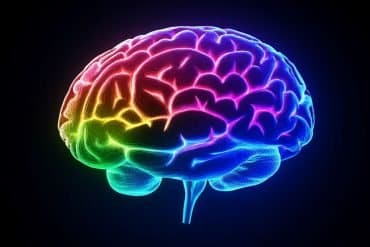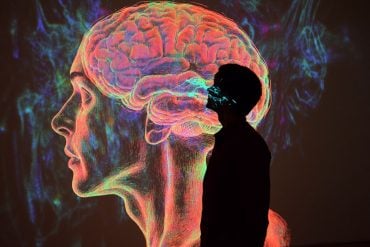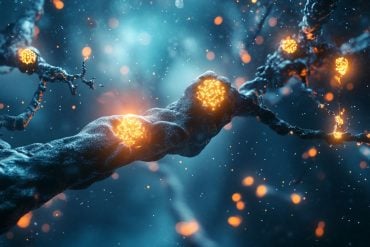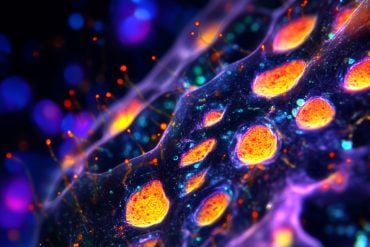Summary: Researchers have pioneered a non-invasive technique to map the human auditory pathway, crucial for determining the optimal surgical treatment for profound hearing loss.
The method is designed to aid early interventions, ensuring the auditory-language network develops properly, enhancing long-term outcomes. The study focused on congenital sensorineural hearing loss (SNHL), with the prevalence rising over the years.
Through novel MRI techniques, the study offers a comprehensive presurgical evaluation blueprint for treating SNHL.
Key Facts:
- The auditory pathway, responsible for carrying speech sounds through the brain, is crucial for spoken language development; damage can lead to diminished language skills.
- The novel technique uses a combination of track density imaging and probabilistic tractography to provide an in-depth view of the auditory and language pathways.
- Findings indicate that the language pathway is more affected by IEMs and/or CNDs than the central auditory system, suggesting its structure is more vulnerable to conditions of the peripheral auditory structure.
Source: eLife
Researchers have developed a non-invasive method for mapping the human auditory pathway, which could potentially be used as a tool to help clinicians decide the best surgical strategy for patients with profound hearing loss.
The findings, published today in eLife, highlight the importance of early interventions to give patients the ability to hear and understand speech, so that their auditory-language network can develop properly and their long-term outcomes are improved.
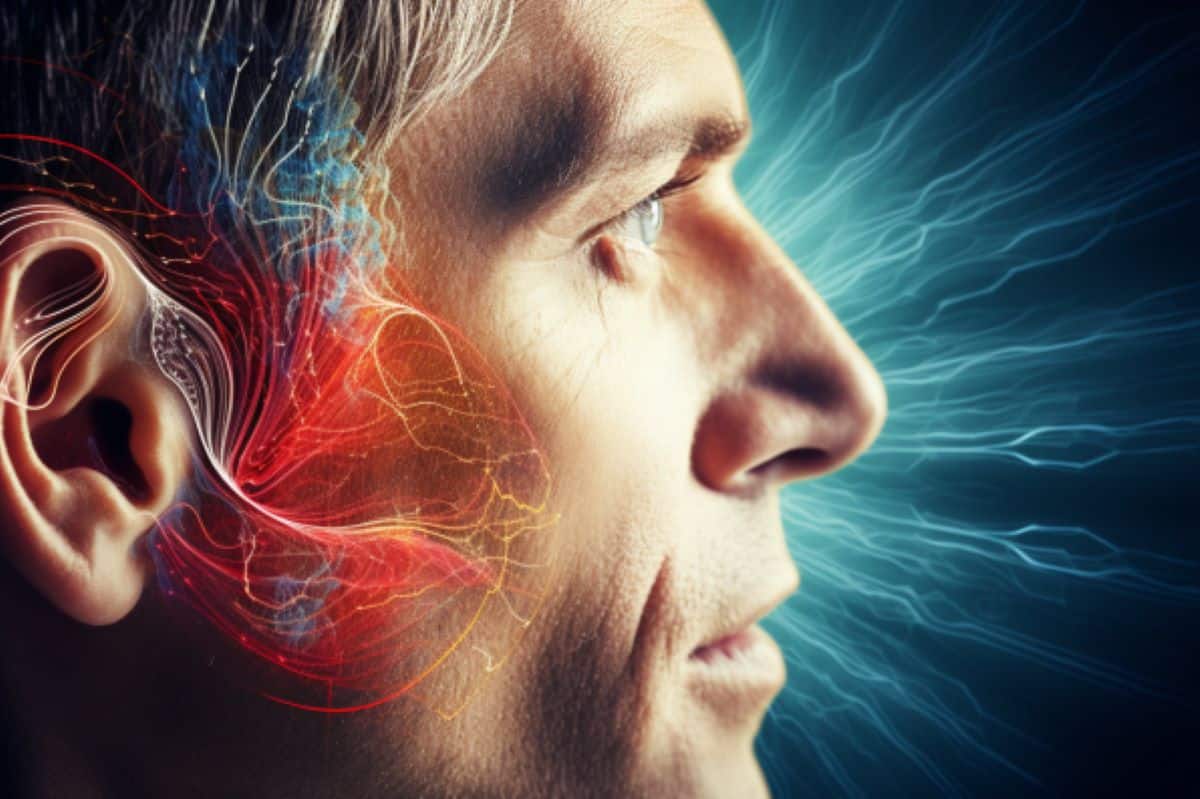
Sensorineural hearing loss (SNHL) occurs when the sensitive hair cells inside the cochlea are damaged, or when there is damage to the auditory nerve which transmits sound to the brain.
A person with profound hearing loss is typically unable to hear any sounds, or at best, only very loud sounds. Congenital SNHL, or hearing loss that is present from birth, has increased in prevalence over the past two decades, from 1.09 to 1.7 cases per 1,000 live births*.
The sound of speech is carried through the brain by nerve fibres in regions known as the auditory pathway, and are processed in a region called the language network. In cases of congenital SNHL, the lack of speech inputs reaching the language network may hinder its proper development, leading to poorer spoken language skills.
Currently, the primary treatments for profound SNHL are cochlear and auditory brainstem implantation, where a device is used to stimulate the peripheral cochlea or the central cochlear nucleus, respectively.
Both techniques can partially restore hearing in patients, but their language development outcomes can vary. This is especially true for patients with inner ear malformations (IEM) or cochlear nerve deficiencies (CND), which contribute to 15–39% of congenital SNHL cases.
“Where SNHL is caused by CNDs and/or IEMs, there is a great deal of uncertainty around the best method of treatment. This is due to the difficulty of assessing the condition of the cochlear nerve and distinguishing between certain types of IEM, both of which impact surgical decision making,” says senior authors Hao Wu, a professor and Chief Physician specialising in Otolaryngology at Shanghai Ninth People’s Hospital, Shanghai Jiao Tong University School of Medicine, China.
Wu also serves as the Hospital Administrator and the Clinical and Academic Lead for the department. “We therefore need a more effective method for mapping the auditory pathway and diving deeper into how IEMs and CNDs affect the development of the auditory-language network.”
In their study, professor Wu’s team investigated the auditory and language pathways in 23 children under the age of six. They included 10 children with normal hearing, and 13 with profound SNHL. In the latter group, seven children had received cochlear implantations, two had received auditory brainstem implantations, and four were candidates for auditory brainstem implantations.
The human auditory pathway is difficult to investigate non-invasively due to its delicate and intricate subcortical structures located deep within the brain. To navigate this, the team developed a new methodology to reconstruct the pathway.
First, they segmented the subcortical auditory structures using track density imaging, which are reconstructed from a specific type of MRI scan and provide much greater detail and information on the structural connectivity of the brain. This allowed them to delineate the cochlear nucleus and the superior olivary complex of the auditory pathway.
They then tracked the auditory and language pathways using a neuroimaging technique called probabilistic tractography, which uses the information from an MRI scan to provide the most likely view of structural brain connectivity. Next, the team conducted a fixel-based analysis to assess the density and cross-section of the nerve fibres in the auditory and language pathways.
This combined methodology allowed them to investigate three key areas to inform surgical decision making: the condition of the nerve fibres in the auditory-language network of children with profound SNHL; the potential impact of IEMs and CNDs on the development of the network before surgical intervention; and the relationship between the pre-implant structural development of the network and the auditory-language outcomes following implantation.
The team’s observations revealed a lower nerve fibre density in children with profound SNHL, in comparison to those with normal hearing. This reduction was most pronounced in two regions of the inferior central auditory pathway, as well as the left language pathway.
In addition, the findings revealed that the language pathway is more sensitive than the central auditory system to IEMs and/or CNDs, implying that the structural development of the language pathway is more negatively impacted by the condition of the peripheral auditory structure.
However, the authors caution that further study is required to validate this finding. As it is more difficult to image the central auditory pathway than the language pathway, this difference could have arisen due to the limitations of current neuroimaging technologies.
The authors say the study is also limited by a relatively small cohort of patients and an incomplete genetic dataset, so more studies with a more diverse patient population will also be needed. But with further validation, they add that the methodology could be used more widely for informing decisions in treating profound SNHL.
“Our study introduces a new pipeline for reconstructing the central auditory pathway, and proposes an initial framework for a comprehensive presurgical evaluation to inform surgical decisions in treating SNHL,” concludes Hao Wu.
“We hope our methods can be used in wider clinical settings in future to decide on early interventions for children with profound SNHL, in order to improve their post-surgery outcomes.”
About this auditory neuroscience research news
Author: Emily Packer
Source: eLife
Contact: Emily Packer – eLife
Image: The image is credited to Neuroscience News
Original Research: Open access.
“Impact of inner ear malformation and cochlear nerve deficiency on the development of auditory-language network in children with profound sensorineural hearing loss” by Hao Wu et al. eLife
Abstract
Impact of inner ear malformation and cochlear nerve deficiency on the development of auditory-language network in children with profound sensorineural hearing loss
Profound congenital sensorineural hearing loss (SNHL) prevents children from developing spoken language. Cochlear implantation and auditory brainstem implantation can provide partial hearing sensation, but language development outcomes can vary, particularly for patients with inner ear malformations and/or cochlear nerve deficiency (IEM&CND).
Currently, the peripheral auditory structure is evaluated through visual inspection of clinical imaging, but this method is insufficient for surgical planning and prognosis. The central auditory pathway is also challenging to examine in vivo due to its delicate subcortical structures.
Previous attempts to locate subcortical auditory nuclei using fMRI responses to sounds are not applicable to patients with profound hearing loss as no auditory brainstem responses can be detected in these individuals, making it impossible to capture corresponding blood oxygen signals in fMRI. In this study, we developed a new pipeline for mapping the auditory pathway using structural and diffusional MRI.
We used a fixel-based approach to investigate the structural development of the auditory-language network for profound SNHL children with normal peripheral structure and those with IEM&CND under 6 years old.
Our findings indicate that the language pathway is more sensitive to peripheral auditory condition than the central auditory pathway, highlighting the importance of early intervention for profound SNHL children to provide timely speech inputs.
We also propose a comprehensive pre-surgical evaluation extending from the cochlea to the auditory-language network, showing significant correlations between age, gender, Cn.VIII median contrast value, and the language network with post-implant qualitative outcomes.




